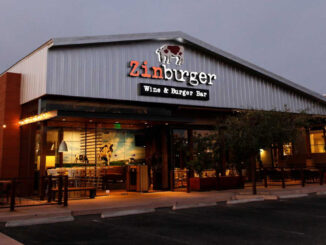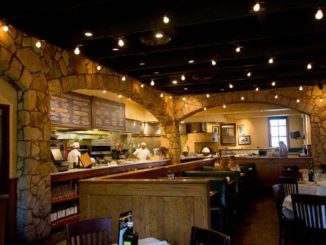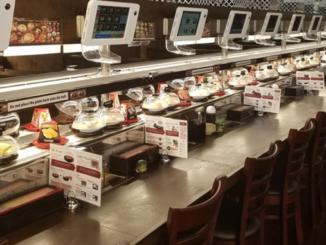
By Erik Cox, Vice President of Product Strategy, CrunchTime - 5.7.2019
How do you keep your employees engaged and ready to work? What keeps them happy enough to stick around? These are questions every restaurant brand should ask themselves. At a time when turnover and labor costs have reached critical levels of concern, brands must account for the employee experience. Any technology that supports this is an important investment.
So, what do restaurant employees want? The same as everyone else
Before we discuss how to leverage technology to give employees what they want, let’s examine what that is. In 2018, Business Insider conducted several interviews with quick service restaurant team members to answer an important question: what do they wish they could tell management? After speaking with several current and former employees, the publication concluded that they want four things:
- A stronger focus on training
- Managers who listen to employee preferences
- Kind managers who are nice to their team
- Increased support for people who work hard
These aren’t shocking revelations. The average employee in any industry wants to be trained. They want managers who listen and are nice to them and their colleagues. They want their hard work to be recognized. Yet, it’s telling that employees listed these as things they wished they could tell their managers. So it’s likely there are workers across the restaurant industry who feel these needs are not being met.
Using technology to keep up
It’s important to note that just because your restaurant may have employees who agree with the interviewees, it doesn’t mean you have bad managers. Every good manager understands the importance of communication, but it only works in theory. In any given restaurant shift, everyone from the manager on down juggles a seemingly endless list of tasks. When the dinner rush hits, the team starts moving a million miles per minute. It’s no wonder communication falls by the wayside. Everyone just wants to survive the shift.
So when employees feel like they aren’t properly trained or managers aren’t communicating with staff, it often isn’t due to a lack of caring. It’s typically a lack of resources. Fortunately, with the right technology, teams can survive the rush while maintaining a positive employee experience. It’s a matter of streamlining the duties that don’t require a human touch so more time can be spent focusing on the ones that do.
There are no shortage of mundane, albeit important operational tasks to complete at a restaurant. Managers are constantly managing inventory counts, sales forecasts, labor schedules, payroll, health code compliance, food cost variances, etc… the list goes on and on. These things have to get done, even if it means taking time away from properly interacting with team members. So that’s the bad news – there’s no getting around completing these tasks. The good news is that many of them can be simplified and streamlined using readily available and cost effective technologies.
With back office automation tools, managers can create schedules based on defined business rules, combined with employee availability and skills. Sales forecasting, food prep, and ordering can be done automatically based on historical data. Computers are great at executing these kinds of tasks. They’re not so good at talking to employees, listening, and most importantly caring for their emotional needs. Relying on back office automation frees up the manager’s time to focus on the human interaction their employees’ desire.
Restaurants will always be a people business. All staff should have the ability to adequately interact with guests, while managers and employees need time to connect with each other. Automation tools empower every team member to complete tasks quickly so time can be spent on areas where a computer just doesn’t cut it.
Enhancing communication with technology
These operational tools don’t just free up time for team interaction, they enhance it. Today most, if not all of your team members own a personal mobile smart device. Consider the benefits of a mobile app that allows workers to view their schedules, request time off, update availability, swap shifts, and message their managers. There might not always be time to do these things in the restaurant, so everyone should be empowered to do them on their own time with their own device. To take this even further, picture having the ability to access comprehensive position details like the job description of sous chefs before engaging with potential employers.
As mentioned in the Business Insider research, employees want more training. One interviewee said they received nothing more than a “glorified PowerPoint” as training. Online learning programs hold staff members accountable for understanding their responsibilities. This alleviates the concern that employees aren’t receiving the information they need to do their jobs and it helps managers ensure everyone is properly trained.
Finally, a lack of acknowledgement often stems from managers not knowing who should be commended for a job well done. A restaurant operations platform helps managers monitor both automated and manual tasks through to completion. It also allows workers to signify when a job is completed and that they were the ones to do it. With this kind of oversight, managers can send a “well done” message, and as stated in the article, this kind of feedback goes a long way.
The bottom line
No one joins a job with the intention to leave right away. The experience often determines how well managers retain employees. Technology that facilitates feedback communication, frees up time for more consistent connections, and empowers employees to do their jobs quickly and correctly will provide a much more positive experience and in turn help solve the turnover blues.
 Erik Cox is the Vice President of Product Strategy at CrunchTime. After spending two decades as a restaurant operator, Erik Cox joined CrunchTime in 2008 to help build the tools he wished he had during his time in the restaurant industry. Today he leads the strategic planning and development of systems designed to innovate restaurant operations. For more than 20 years, CrunchTime has helped some of the world’s top restaurant brands streamline into back office operations, optimize food and labor costs, and increase profitability.
Erik Cox is the Vice President of Product Strategy at CrunchTime. After spending two decades as a restaurant operator, Erik Cox joined CrunchTime in 2008 to help build the tools he wished he had during his time in the restaurant industry. Today he leads the strategic planning and development of systems designed to innovate restaurant operations. For more than 20 years, CrunchTime has helped some of the world’s top restaurant brands streamline into back office operations, optimize food and labor costs, and increase profitability.
Are you an industry thought leader with a point of view on restaurant technology that you would like to share with our readers? If so, we invite you to review our editorial guidelines and submit your article for publishing consideration.




